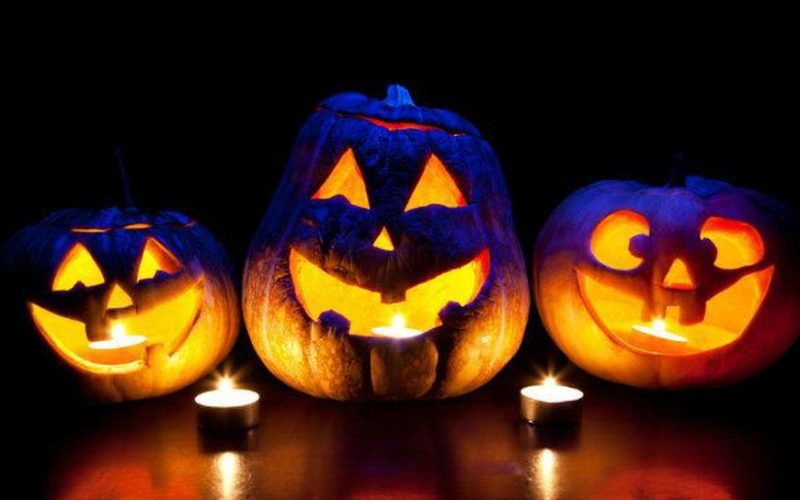The Halloween season is returned, which means it’s (nearly) time to become creepy.
As Halloween approaches, youngsters around the country will be carving pumpkins and selecting costumes.
Due to the ongoing coronavirus pandemic, Halloween looked very different last year. But with no lockdown restrictions in 2023, many Brits will be eager to participate in the traditions, such as trick or treating. However, few people are aware that the famous day has a pretty sinister background. So, when is Halloween this year, does the date ever change, and why do we celebrate it in the first place? Here’s what you should know.
When is Halloween this Year?
Every year on October 31st, Halloween is commemorated. Halloween will be on a Monday in 2023.
Though it is observed on this date in the United Kingdom, the United States, and many other countries, it is not as widely observed in other countries.
The custom stems from the ancient Celtic holiday of Samhain when people would light bonfires and dress up in costumes to ward off ghosts. Pope Gregory III established November 1 as a day to celebrate all saints in the ninth century. All Saints Day soon included some Samhain rituals. The previous evening was known as All Hallows Eve, and later as Halloween. Halloween has grown into a day of activities such as trick-or-treating, carving jack-o-lanterns, celebratory parties, dressing up in costumes, and eating candy.
Halloween is a mash-up of pagan and Christian traditions. It evolved from an ancient Celtic seasonal celebration to commemorate the end of the harvest and memorialize the dead (known as Samhain), which is observed from sunset on October 31 to sunset on November 1.
While not an official holiday, Halloween is celebrated in several nations throughout the world, particularly in the West (North America and Europe), but also increasingly in Asian countries due to the business opportunities it brings. It is projected that in the United States, it is the holiday with the second-highest amount of consumer spending after Christmas.
Halloween is followed by All Saints’ Day (for which it is the vigil) on November 1 and All Souls’ Day on November 2. The three days of recollection of the deceased compose the triduum (a three-day religious observance) of Hallowtide. During this period, people typically visit the graves of deceased relatives. It has something to do with the Mexican holiday Day of the Dead.
When is Halloween in Year 2023?
Halloween day for the year 2023 is on Tuesday, October 31, 2023
Dates for Halloween from 2016 to 2026
When is …? | Date | Day of the week |
| Halloween 2016 | October 31, 2016 | Monday |
| Halloween 2017 | October 31, 2017 | Tuesday |
| Halloween 2018 | October 31, 2018 | Wednesday |
| Halloween 2019 | October 31, 2019 | Thursday |
| Halloween 2020 | October 31, 2020 | Saturday |
| Halloween 2021 | October 31, 2021 | Sunday |
| Halloween 2022 | October 31, 2022 | Monday |
| Halloween 2023 | October 31, 2023 | Tuesday |
| Halloween 2024 | October 31, 2024 | Thursday |
| Halloween 2025 | October 31, 2025 | Friday |
| Halloween 2026 | October 31, 2026 | Saturday |
Read Also: Jumia black friday treasure hunt 2023: All you need to win (+ free tips)
Halloween’s Ancient Origins
The origins of Halloween can be traced back to the ancient Celtic feast of Samhain (pronounced sow-in). The Celts, who lived 2,000 years ago in what is now Ireland, the United Kingdom, and northern France, celebrated their new year on November 1.
This day signified the end of summer and harvest, as well as the start of the dark, frigid winter, a time of year that was typically associated with human death. Celts believed that the line between the worlds of the living and the worlds of the dead got blurred on the night before the new year. They celebrated Samhain on the night of October 31, when it was believed that the ghosts of the dead returned to earth.
In addition to causing havoc and destroying crops, Celts believed that the presence of otherworldly spirits made it easier for Druids or Celtic priests, to prophesy the future. These forecasts were a source of consolation throughout the long, dark winter for people who were completely dependent on the turbulent natural environment.
Druids erected massive sacred bonfires to celebrate the festival. There, people came to burn crops and animals as sacrifices to the Celtic deities. During the event, the Celts dressed up in costumes made of animal heads and skins and sought to tell each other’s fortunes.
When the celebration was done, they re-lit their hearth fires from the sacred bonfire, which they had extinguished earlier that evening, to help safeguard them during the approaching winter.
Did you know that? Halloween candy accounts for one-quarter of all candy sold in the United States each year.
Read Also: Black Friday 2023: Predictions, Coronavirus trends, deals and sales (+ best easy tips)
All Hallows’ Eve
Pope Boniface IV dedicated the Pantheon in Rome to all Christian martyrs on May 13, 609 A.D., and the Catholic feast of All Martyrs Day was founded in the Western church. Later, Pope Gregory III expanded the holiday to include all saints and martyrs and relocated the celebration from May 13 to November 1.
By the 9th century, Christianity’s influence had spread into Celtic territories, eventually blending with and supplanting ancient Celtic traditions. The church declared November 2 All Souls’ Day, a day to remember the deceased, in 1000 A.D. Today, it is widely assumed that the church attempted to replace the Celtic feast of the dead with a related, church-sanctioned holiday.
All Souls’ Day was celebrated in the same way that Samhain was, with large bonfires, parades, and people dressed up as saints, angels, and demons. All Saints’ Day was also known as All-hallows or All-hallowmas (from Middle English Alholowmesse, which means All Saints’ Day), and the night before it, the customary night of Samhain in Celtic religion, became known as All-Hallows Eve and, finally, Halloween.
Halloween in America
Because of the strict Protestant theological systems in colonial New England, the celebration of Halloween was severely constrained. In Maryland and the southern colonies, Halloween was considerably more common.
As the beliefs and rituals of various European ethnic groups and American Indians merged, a uniquely American version of Halloween emerged. “Play parties,” which were public activities meant to celebrate the harvest, were among the first celebrations. Neighbors would tell ghost stories, tell each other’s fortunes, dance, and sing.
Did you know that? More individuals are dressing up their pets in costumes. Americans spent $490 million on pet costumes in 2019, more than doubling their spending in 2010.
Colonial Halloween celebrations also included the telling of ghost stories and various forms of mischief-making. Annual autumn festivities were prevalent by the mid-nineteenth century, although Halloween was not yet celebrated across the country.
America was inundated with new immigrants in the second part of the nineteenth century. These newcomers, particularly the millions of Irish escaping the Irish Potato Famine, helped to promote Halloween on a national scale.
Read Also: Fortune 100 List of Companies in 2023 Updated!!!
Symbols
There are a plethora of Halloween symbols. Animals such as black cats, bats, and spiders are among them. There are also ghosts, skeletons, witches, and wizards to be found. Pumpkins, graveyards, cobwebs, and scary houses are all popular Halloween decorations. Halloween is also connected with the hues green, orange, grey, and black. These symbols can be found on costumes, gift paper, cards, pastries, cakes, and candies, and they are utilized to decorate homes and party sites.
The Origins of Trick-or-Treating
Borrowing from European traditions, Americans began dressing up in costumes and going door to door asking for food or money, a practice that evolved into today’s “trick-or-treat” celebration. Young ladies believed that by performing tricks with yarn, apple parings, or mirrors on Halloween, they could discern the name or appearance of their future husbands.
In the late 1800s, there was a movement in America to make Halloween a holiday about community and neighborly gatherings rather than ghosts, pranks, and witches. Halloween parties for both children and adults became the most popular way to commemorate the holiday around the turn of the century. Parties with a focus on games, seasonal delicacies, and colorful costumes.
Newspapers and community leaders urged parents to keep anything “frightening” or “grotesque” out of Halloween celebrations. By the beginning of the twentieth century, Halloween had lost much of its superstitious and religious undertones as a result of these efforts.
Halloween Celebrations
By the 1920s and 1930s, Halloween had evolved into a secular yet community-centered holiday, with parades and town-wide Halloween festivities serving as the main attraction. Vandalism began to plague some festivals in many localities at this time, despite the best efforts of many schools and communities.
By the 1950s, city officials had successfully curbed damage, and Halloween had evolved into a holiday aimed mostly at children. Because of the large number of small children during the 1950s baby boom, celebrations were shifted from town civic buildings to classrooms or homes, where they could be more easily accommodated.
The centuries-old ritual of trick-or-treating was also revived between 1920 and 1950. Trick-or-treating was a low-cost way for an entire town to participate in the Halloween celebration. In theory, families may also prevent tricks from being played on them by presenting little presents to the neighborhood children.
As a result, a new American custom was formed, and it has since grown. So, today, Americans spend an estimated $6 billion on Halloween each year, making it the country’s second most popular commercial holiday behind Christmas.
How Is Halloween Celebrations Today?
Although Halloween is still a popular holiday in the United States, it almost didn’t makeover across the Atlantic. The Puritans were opposed to the holiday’s pagan roots, thus they boycotted the festivities. However, as more Irish and Scottish immigrants arrived in America, the holiday re-entered the public consciousness. The first American colonial Halloween celebrations included big public gatherings to welcome the forthcoming harvest, tell ghost stories, sing, and dance.
It is estimated that during the early twentieth century, the majority of (candy-loving, costume-wearing) people in North America celebrated Halloween. Also, this year, on October 31, we’ll all be eating our favorite Halloween candy and admiring our neighbors’ decorations, with the only eerie spirits we’ll be talking about being the witch and ghost costumes our pals are wearing.
Halloween Movies
When it comes to financial success, spooky Halloween movies have a long track record of being box office hits. The “Halloween” franchise, based on the 1978 original picture directed by John Carpenter and starring Donald Pleasance, Nick Castle, Jamie Lee Curtis, and Tony Moran, is a classic Halloween film. In the film “Halloween,” a little boy named Michael Myers murders his 17-year-old sister and is imprisoned, only to escape as a teen on Halloween night and seek out his old house and a new target. In 2018, a direct sequel to the original “Halloween” film starring Jamie Lee Curtis and Nick Castle was released. So, in 2021, a sequel, “Halloween Kills,” the twelfth film in the “Halloween” franchise overall, was released.
“Halloween,” considered a classic horror film down to its eerie music, spawned other renowned “slasher flicks” such as “Scream,” “Nightmare on Elm Street,” and “Friday the 13th.” “Hocus Pocus,” “The Nightmare Before Christmas,” “Beetlejuice,” and “It’s the Great Pumpkin, Charlie Brown” are other family-friendly Halloween films.
All Souls Day and Soul Cakes
Trick-or-treating on Halloween in the United States is most likely derived from early All Souls’ Day parades in England. During the festivities, needy citizens would beg for food, and families would offer them “soul cakes” in exchange for their vow to pray for the family’s deceased relatives.
The church promoted the distribution of soul cakes as a replacement for the historical practice of leaving food and drink for wandering spirits. The tradition, known as “going a-souling,” was eventually adopted by children who would visit their neighborhood households and be given ale, food, and money.
The Halloween costume tradition has both European and Celtic origins. Winter was an unknown and dangerous period hundreds of years ago. Food supplies frequently ran low, and the short days of winter were fraught with anxiety for many individuals who were scared of the dark.
People thought they would encounter ghosts if they left their homes on Halloween when it was believed that ghosts returned to the earthly world. People would wear masks when leaving their homes after dark to avoid being recognized by these ghosts, hoping that the ghosts would mistake them for fellow spirits.
To keep ghosts away from their homes on Halloween, folks would leave bowls of food outside their doors to pacify the spirits and prevent them from entering.
Halloween’s Black Cats and Ghosts
Halloween has always been a holiday steeped in mystery, magic, and superstition. It started as a Celtic end-of-summer event during which people felt particularly close to deceased relatives and friends. So, they arranged places at the dinner table for these friendly spirits, left treats on doorsteps and along the side of the road, and lit candles to help loved ones find their way back to the spirit realm.
Today’s Halloween ghosts are frequently depicted as more terrifying and malicious, as are our customs and beliefs. We avoid black cats because we are scared they will bring us bad luck. This belief dates back to the Middle Ages when many people believed that witches avoided detection by transforming into black cats.
We avoid walking beneath ladders for the same reason. This superstition may have originated with the ancient Egyptians, who held triangles to be sacrosanct (it also may have something to do with the fact that walking under a leaning ladder tends to be fairly unsafe). And, especially around Halloween, we strive to avoid smashing mirrors, walking on road cracks, and spilling salt.
Lesser-Known Rituals and Halloween Matchmaking
But what about the Halloween customs and beliefs that today’s trick-or-treaters have completely forgotten? Many of these outmoded rites centered on the future rather than the past, and on the living rather than the dead.
Many had to do with assisting young women in identifying potential husbands and promising them that they would be married someday—hopefully by next Halloween. So, on Halloween night in 18th-century Ireland, a matchmaking cook may conceal a ring in her mashed potatoes, believing that the diner who found it would find true love.
In Scotland, fortune-tellers advised a suitable young woman to name a hazelnut after each of her suitors and then hurl the nuts into the fireplace. According to legend, the nut that burned to ashes rather than popping or exploding symbolized the girl’s future husband. (In other versions of the narrative, the nut that burned away represented a love that would not last.)
According to another legend, if a young woman ate a sugary mixture composed of walnuts, hazelnuts, and nutmeg before going to bed on Halloween night, she would dream of her future husband.
Young women tossed apple peels over their shoulders, hoping that the peels would fall on the floor in the shape of their future husbands’ initials; peered at egg yolks floating in a bowl of water to learn about their futures; and stood in front of mirrors in darkened rooms, holding candles and looking over their shoulders for their husbands’ faces.
So, other rites were more competitive in nature. The first guest to uncover a burr on a chestnut search at some Halloween parties would be the first to marry. Others believe that the first successful apple-bobber will be the first down the aisle.
Halloween Celebration Ideas
Many Halloween traditions are harmless fun, however some deal with mortality and the themes of good and evil.
In England, Halloween was historically known as “Nutcrack Night,”. This is a time when the family gathered around the hearth to drink cider, nuts, and apples.
#1. Pumpkins Carvings
Carving pumpkins is the most popular Halloween tradition in North America. So, every year during Halloween youngsters enjoy scooping out the insides of the pumpkin with a spoon and carving their pumpkin with a little help from their parents (or, if they’re young, a lot of help!).
Pumpkins Painting
Because carved pumpkins only last 3 to 7 days before decomposing, painting your pumpkins may be a lot of fun. This is enjoyable for people of all ages. However, it is especially appropriate for schools, groups, and offices that wish to hold an early pumpkin decorating contest. See who can create the best design! Give out prizes for the most inventive, amusing, and artistic pumpkins.
Grill Pumpkin Seeds
Of course, after you’ve scooped out the pumpkin insides, you’ll want to roast the pumpkin seeds! Be careful, these salty and crispy treats disappear quickly! If you don’t want to eat the seeds, you can save them to construct a colorful pumpkin seed necklace.
#2. Dressing in Halloween Costumes
Everyone enjoys the opportunity to dress up in Halloween costumes. Traditional costumes include witches, zombies, ghosts, and vampires, all of which are spooky or Halloween-related. However, in the United States, costumes can range from huge bananas to superhero characters to whatever your imagination can concoct!
You don’t have to buy a costume; the practice was to construct your own at home. So, to become a mummy, all you need is toilet paper. An old white sheet can transform into a ghost. Make a vampire out of facepaint.
#3. Crafts for Halloween
There are plenty of enjoyable Halloween activities and crafts. Here are a few of our favorites from previous years:
- Apple bobbing. We all used to bob our heads in a large metal tub of water, attempting to grab an apple with only our teeth. Many parents today believe that this is unhealthy. But here’s a fun alternative: Put an apple in a bucket of water and challenge everyone to take a bite. Make it a race, with a prize for the winner.
- Cornhusk dolls: Native American children produced cornhusk dolls a long time ago, and it’s still a pleasant activity today.
- Shrunken Apple Heads: Have you ever produced shrunken apple heads? This custom was also passed down from Native Americans. You only need apples!
#4. Cook Yummy Halloween Treats
Of course, you’ve heard the expression “Trick or Treat?” The “treats” are much more appealing than the “tricks.” Here are some old-fashioned favorites from before the advent of packaged candy:
- Candy Apples
- Peanut Brittle
- Oven Caramel Corn
- Peanut Butter Balls
If you like classic Oreos, you’ll like making these spooky spider cookies—and eating them afterward!
Other Halloween Ideas that are Safe and Fun
Here are six more fun and family-friendly ideas for kids and adults alike!
#1. Trick-or-Treat Trail:
Provide children with a simple map of your area. They must follow clues as they wander throughout the neighborhood with their map in order to obtain snacks. It could be something as basic as a road sign, a house with large stones at the end of the driveway, a large tree, or a one-of-a-kind mailbox. If you have neighbors that decorate their homes and porches, you can look for pumpkins, skeletons, and other Halloween decorations! Simply place a treat in your child’s bag at each stop. A comparable suggestion for a broader neighborhood event is to offer neighbors pumpkin drawings to hang in their windows and reward children when they spot the next pumpkin drawing; this concept requires some planning and close neighbors!
#2. Halloween Hide-and-Seek:
Hide wrapped sweets throughout the house or yard, similar to an egg hut, and let the youngsters go find the treats. You can also make it into a candy scavenger hunt by using clue cards and having them follow clues to fill their buckets with candy placed throughout your house or yard.
#3. Ghost Story Time:
It’s time to share ghost stories! (Depending on your children’s ages and temperament, they can be scary or not-so-scary.) Gather around with a few candles or flashlights and a few comfy pillows and blankets.
#4. BOO! Your Next-door Neighbor:
Create a “You’ve Been Booed!” basket or baggie and leave it on the doorstep of a family member, friend, or neighbor, complete with a tiny treat and a sign or poster that says, “You’ve Been BOOed!” Then put the placard in your window and spread the love!
#5. Halloween Movie Night:
Host a family gathering! Bob for apples (in individual bowls if desired), try to catch donuts dangling on a line with your mouth and wrap each other in toilet paper like mummies to see who finishes their roll earliest. Rent a Halloween movie and accompany it with Halloween-themed snacks and treats! Ideas for G-rated movies to rent: Charlie Brown, it’s the Great Pumpkin. The Addams Family, Hotel Transylvania, The Spiderwick Chronicles, The Nightmare Before Christmas, and Beetlejuice are all rated PG.
#6. Stick-or-Treat:
Instead of having guests exchange candy at your door, spread the candy out on a blanket in separate bags, or stick the candy in the ground. Wrap the Tootsie Roll Lollipops in tissue paper and turn them into ghosts if you have time!
Can Halloween be celebrated on a different day?
Yes, Halloween can be celebrated on a different day in some cultures or communities, but the traditional date is October 31st.
Is Halloween a national holiday?
No, Halloween is not a national holiday in most countries, but it is widely celebrated as a cultural holiday.
Can Halloween be celebrated in other countries besides the US?
Yes, Halloween is celebrated in many countries around the world, including the US, Canada, Mexico, the UK, and Australia.
What are some popular Halloween activities?
Popular Halloween activities include trick-or-treating, carving pumpkins, attending costume parties, and watching horror movies.
What is trick-or-treating?
Trick-or-treating is a Halloween tradition where children dress up in costumes and go door-to-door asking for candy.
How did the tradition of carving pumpkins originate?
The tradition of carving pumpkins originated from the Irish legend of Stingy Jack, who tricked the devil and was doomed to roam the earth with only a carved-out turnip to light his way. Irish immigrants brought the tradition to the US and began carving pumpkins instead of turnips.
Happy Halloween!
What is your favorite Halloween tradition? Tell us in the comments!
Halloween FAQ’s
Is Halloween the 31st or 1st?
Halloween, often known as “All Hallows’ Eve,” is observed on the evening preceding the Christian holy day of All Hallows’ Day or All Saints Day (November 1). As a result, Halloween is always observed on October 31.
Why Halloween is bad?
Halloween is associated with elaborate costumes, haunted houses, and, of course, sweets, but it is also associated with a number of hazards, such as pedestrian fatalities and theft or vandalism. The 31st of October may be one of the most dangerous days of the year for your children, home, automobile, and health.
Will Halloween 2023 happen?
While many events and activities will continue in 2023 with health and safety precautions in place, others have determined it is in the best interests of the community to cancel or “postpone” them once more.
Related Articles
- Jumia black friday treasure hunt 2023: All you need to win (+ free tips)
- Black Friday 2023: Predictions, Coronavirus trends, deals and sales (+ best easy tips))
- Home Business Ideas with Low Start Up Costs: Get the Top 20 Here (+ Easy Quick Tips)
- NIGHTCLUB BUSINESS: How To Successfully Run Your Own Nightclub
- CONFECTIONERY BUSINESS: A Complete Guide (+ quick tips)






